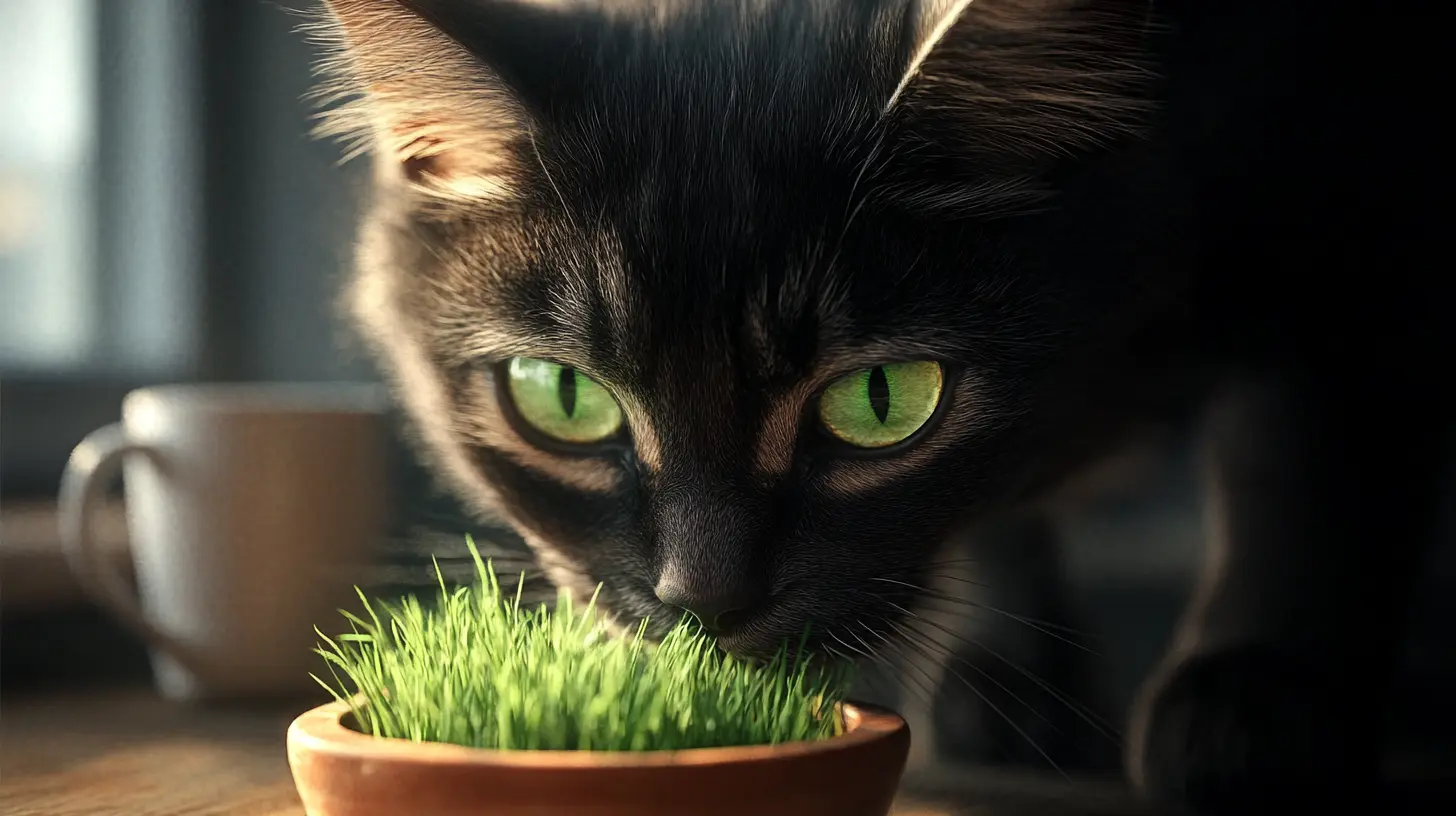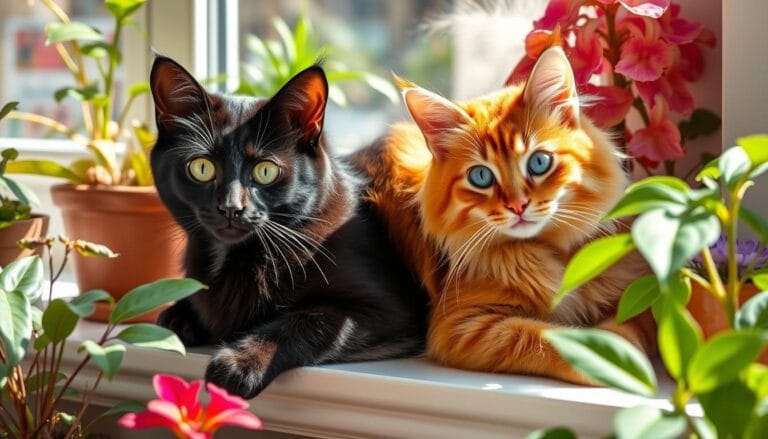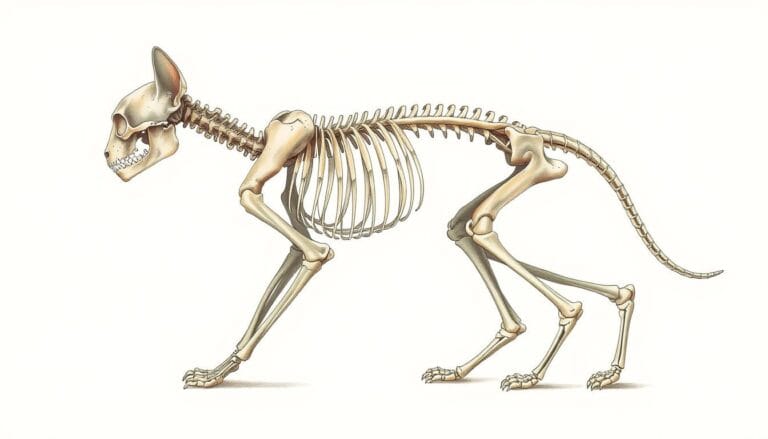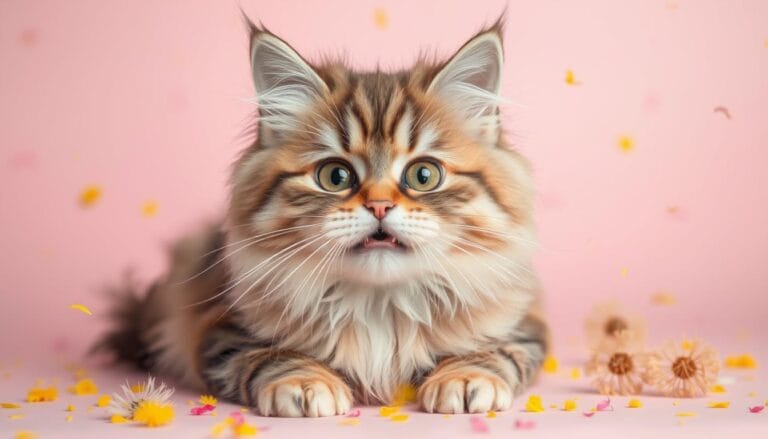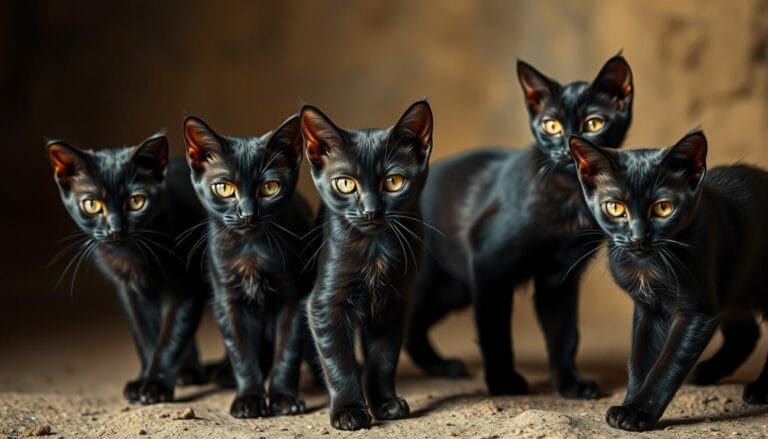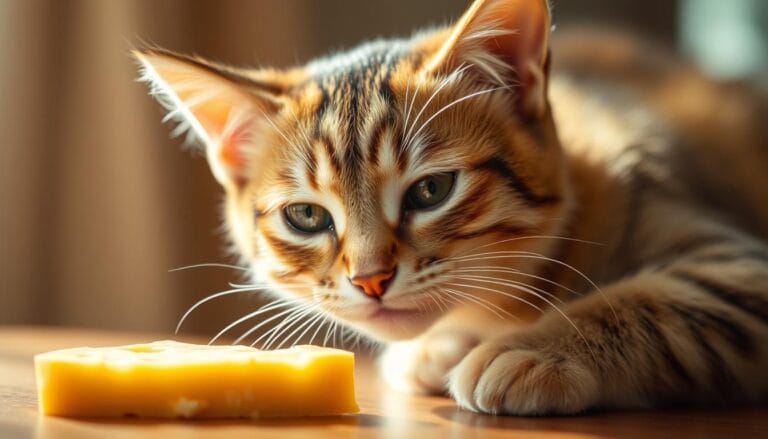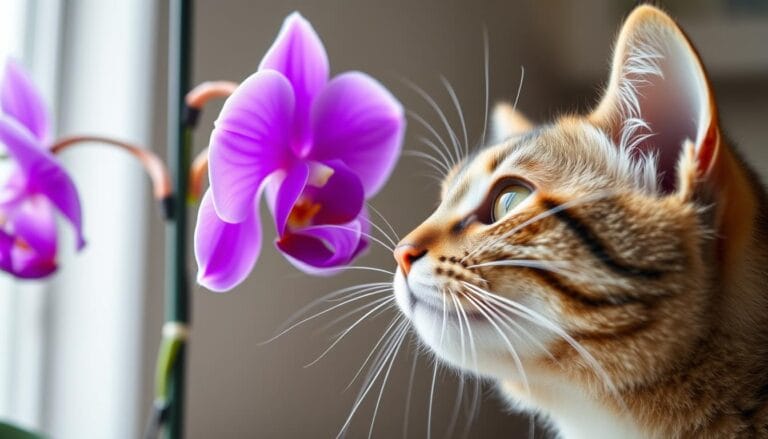Cat Grass Seeds: Why Your Cat Needs This Natural Snack
As a cat owner, you want the best for your feline friend. Providing a healthy snack is key. Cat grass seeds are a great choice, packed with health benefits.
They offer a nutritious snack that’s easy to digest. This helps your cat’s digestive health and gives them important nutrients like folic acid.
Table of Contents
Cat grass is a natural fiber that helps move hairballs. This reduces the risk of furball-related problems. About 30% of indoor cats don’t get enough greenery, making cat grass a great addition.
By adding cat grass seeds to your cat’s diet, you help them stay healthy and happy.
Key Takeaways
- Cat grass seeds provide essential nutrients like folic acid for your cat’s health.
- Cat grass is a natural fiber that aids in digestive health and reduces furball-related distress.
- Approximately 30% of indoor cats lack regular access to natural greenery, making cat grass seeds a beneficial addition.
- Cat grass seeds are a safe alternative to outdoor grass, which may be treated with pesticides.
- Cat grass seeds can be easily grown indoors with a small investment in planting materials.
- Cat grass seeds are an affordable supplement for cat diets, with an average purchase price of $3-5 per pack.
- Cat grass seeds promote a natural and healthy snacking behavior for your cat.
Understanding Cat Grass: A Natural Feline Favorite
Cat grass is a favorite snack for many cats. It’s grown from cat grass seeds like wheat, barley, oat, or rye. These seeds offer nutrients like chlorophyll, vitamins A and D, and fiber. Cat oat grass seeds are a top pick because they’re easy to grow and full of nutrients.
Cat grass is more than a tasty snack. It also helps with digestion. The fiber in cat grass can prevent hairballs and support healthy digestion. Plus, the vitamins and minerals boost your cat’s health and wellbeing.
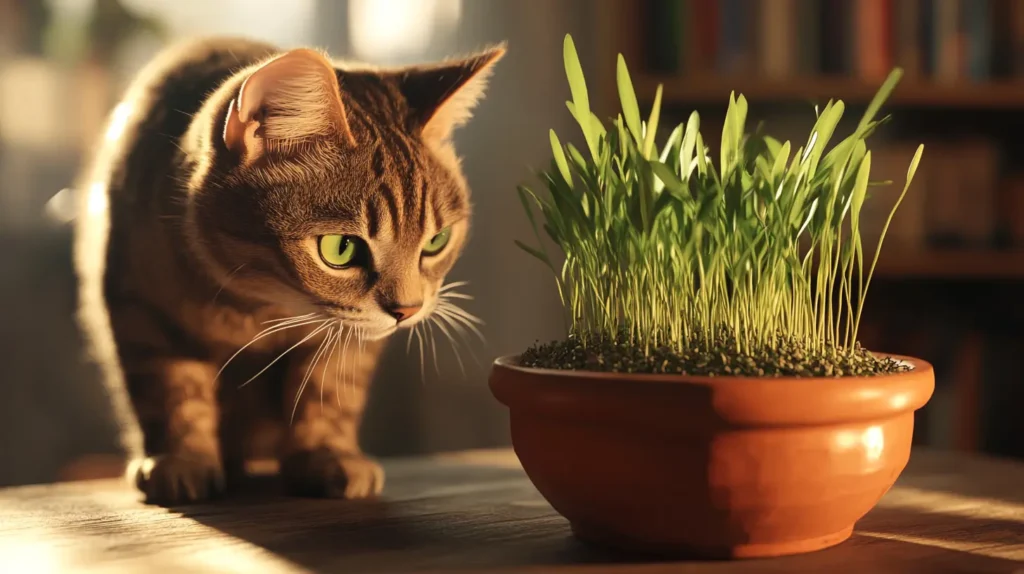
What Exactly Is Cat Grass?
Cat grass is a special type of grass for indoor use by cats. It’s a mix of grasses like wheat, barley, oats, and rye. It’s full of nutrients and can be grown from cat grass seeds or bought as a plant.
Different Types of Cat Grass Seeds
There are many types of cat grass seeds, each with its own benefits. Cat oat grass seeds are popular because they’re easy to grow and nutritious. Other options include wheat, barley, and rye seeds.
Why Cats Are Naturally Drawn to Grass
Cats love grass for more than just the taste. The fiber in cat grass aids digestion, and the vitamins and minerals boost health. Eating grass also helps cats get rid of parasites and hairballs, making it a natural and healthy habit.
The Health Benefits of Cat Grass for Your Feline Friend
Cat grass seeds are a natural and essential part of a cat’s diet. They offer many health benefits. One key advantage is their ability to aid digestion. Grass contains 10-15% fiber, which helps move hairballs through the digestive system.
This can lead to a big drop in hairballs, up to 25-30% less. Studies show that cats who eat cat grass regularly have fewer hairballs.
Cat grass is also packed with nutrients like folic acid and B vitamins. These are important for a cat’s health. Folic acid helps make hemoglobin, which is vital.
A balanced cat grass can have up to 18% protein, 3% fat, and 8% fiber. It’s a great addition to a cat’s diet. Some people even use grass seed cat litter as a healthy litter option.
Regularly eating cat grass can also help cats stay hydrated. It has a moisture content of 70-90%. This is good for cats that don’t drink much water.
Chewing on grass can also help with dental health. It can reduce tartar build-up by about 20-25%. Cat grass is easy to grow and is a great addition to any cat’s diet.
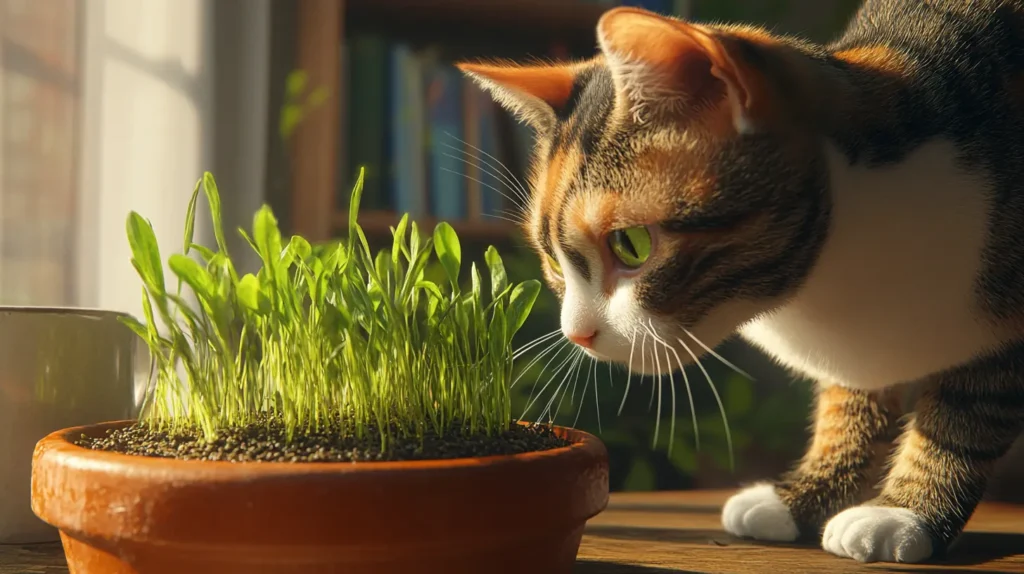
Cat grass is very beneficial for cats. It supports their digestive health, provides essential nutrients, and helps with hydration and dental health. It’s easy to use and promotes a healthy, happy cat.
Choosing the Right Cat Grass Seeds for Indoor Growing
Choosing the right cat grass seeds for indoor growing is important. Cat oat grass seeds are a favorite among cat owners. They are easy to grow and offer a healthy snack for cats. It’s key to pick high-quality seeds made for indoor growing.
Wheat grass, oat grass, and barley grass are top picks for indoor growing. These grasses grow well indoors. Choosing organic cat grass seeds is also wise. They are free from harmful chemicals, making them a safe choice for pets.
Best Varieties for Indoor Cultivation
- Wheat grass: a popular choice among cat owners, rich in vitamins and minerals
- Oat grass: high in fiber and B vitamins, making it an excellent choice for digestive health
- Barley grass: rich in fiber and vitamins, making it an excellent choice for overall health and well-being
By picking the right cat grass seeds and following care tips, cat owners can give their pets a healthy snack. This snack supports their digestive health and overall well-being.
Essential Nutrients Found in Fresh Cat Grass
Fresh cat grass is packed with vitamins and minerals that cats need. Cat grass seeds can grow into a healthy snack. It’s full of folic acid, vitamins A and D, and fiber, which help with digestion and health.
One of the main benefits of cat grass is it helps prevent hairballs. It also supports regular bowel movements. Grass seed cat litter is a great way to grow cat grass, making it easy to keep your cat healthy. The fiber in cat grass acts as a natural laxative, helping with hairballs and bowel movements.
Regularly eating cat grass can also make a cat’s breath fresher. It’s a natural way to improve their oral health. Adding cat grass seeds or grass seed cat litter to your cat’s diet is a smart choice. It gives them a nutritious snack that boosts their health.
Cat grass also keeps cats’ minds active and reduces boredom and stress. It’s a great way to support your cat’s physical and mental health. This can make your cat happier and healthier.
Growing Your Own Cat Grass: A Step-by-Step Guide
To grow your own cat grass, start with cat grass seeds or cat oat grass seeds. You can find these at pet stores or online. Begin the process with your seeds.
First, prepare the soil and plant the seeds. Plant a new batch every 2 weeks for fresh grass. Soaking seeds overnight can speed up germination.
Required Materials and Setup
You’ll need a pot, soil, and water to start. Adding a thin soil layer on top helps seeds grow taller.
Planting and Maintenance Tips
Water seeds 3 times a day for best growth. Place the pot in indirect light. You’ll see growth in 6 days.
Remember these tips for growing cat grass:
- Use quality seeds like cat oat grass seeds
- Water and light are key
- Plant new seeds every 2 weeks
Harvest and Storage Methods
When your grass is ready, harvest and store it in a cool, dry spot. This keeps it fresh for your cats. With care, you’ll have a healthy cat grass crop.
Signs Your Cat Will Benefit from Cat Grass Seeds
Cat owners often wonder if their pets can enjoy cat grass seeds. The answer depends on certain signs. If your cat has hairballs, digestive problems, or stays indoors a lot, they might like cat grass seeds. About 70% of indoor cats prefer to chew on grass when they can.
Some key signs that your cat will benefit from cat grass seeds include:
- Indoor lifestyle: Cats that spend most of their time indoors may benefit from cat grass seeds as a way to stimulate their natural instinct to chew on grass.
- Hairballs: Cats that experience hairballs may benefit from cat grass seeds, as they can help reduce the occurrence of hairballs by up to 30%.
- Digestive issues: Cats with digestive issues may benefit from cat grass seeds, as they contain essential vitamins and minerals that can aid in digestion.
Using grass seed cat litter is a smart way to give your cat grass benefits. It keeps your home clean and smells good. Adding cat grass seeds to your cat’s diet can boost their health and happiness.
Common Mistakes to Avoid When Growing Cat Grass
When growing cat grass, several common mistakes can harm your cat oat grass seeds. It’s important to know these mistakes to help your cat grass seeds grow well. Overwatering is a big problem, as it can cause mold and root rot, affecting the quality of your cat grass seeds.
Lighting is also key. Cat grass needs at least four to six hours of indirect sunlight each day for best growth. Without enough light, your cat grass might grow weak and unappealing to your cat. Proper care for your cat grass seeds, including cat oat grass seeds, is vital to promote healthy growth and prevent common mistakes.
Watering Issues
Overwatering can harm your cat grass. It’s important to keep the soil moist but not too wet. After the seeds germinate, water them every 2-3 days, adjusting based on the environment.
Lighting Problems
Inadequate lighting can greatly affect your cat grass’s growth and quality. It’s essential to ensure your cat grass gets enough indirect sunlight. This helps promote healthy growth and prevents common mistakes.
Soil Selection Errors
Choosing the right soil for your cat grass seeds is also critical. A soilless mix is best, as it helps with better aeration for seed emergence. This prevents common mistakes and ensures your cat oat grass seeds grow into healthy cat grass.
By knowing these common mistakes and avoiding them, you can ensure your cat grass seeds, including cat oat grass seeds, grow into healthy and thriving cat grass. Your feline friend will love it.
Safety Considerations and Precautions
When growing cat grass seeds for your feline friend, safety is key. Make sure the cat grass is out of reach of children and other pets. Grass seed cat litter can be harmful if eaten.
To keep things safe, follow these steps:
- Keep the cat grass in a secure location, away from curious children and pets.
- Regularly inspect the cat grass for any signs of mold or contamination.
- Prevent overwatering, which can lead to root rot and other issues.
By following these tips, you can ensure a safe space for your cat. Also, use grass seed cat litter as directed by the manufacturer.
It’s also important to know the risks of cat grass seeds. Being careful can help your cat enjoy a healthy snack without danger.
Alternative Uses for Cat Grass in Your Home
While cat grass seeds, like cat oat grass seeds, are mainly for cats’ health, they also beautify your home. They can add natural beauty to any room. Plus, they purify the air by removing toxins and pollutants.
Using cat grass in your home has many benefits. It acts as a natural air purifier, reducing the need for artificial air fresheners. This is great for homes with pets, as it eliminates odors and makes the environment healthier. Cat grass also makes beautiful and unique decorative arrangements, adding greenery to any room.
Decorative Benefits
For decoration, cat grass can be planted in various containers, from small pots to large planters. It’s easy to fit into any home decor. Its natural beauty and indoor thriving make it perfect for adding greenery to your space. Whether you want a peaceful atmosphere or natural beauty, cat grass is a great choice.
Air Purification Properties
Cat grass is known to remove toxins and pollutants from the air. This makes your home environment healthier for you and your pets. It’s great for homes with poor air quality, helping to prevent respiratory problems and other health issues. By adding cat grass to your home, you create a healthier and more natural space for everyone.
Conclusion: Making Cat Grass a Healthy Part of Your Pet’s Life
Adding cat grass seeds to your cat’s diet has many benefits. It helps with digestion and managing hairballs. It also gives them important nutrients. Growing it at home is easy and convenient for pet owners.
By growing your own grass seed cat litter, your cat gets a safe, natural source of green. Cat grass can also reduce stress and stop bad behaviors. This makes your cat happier and healthier.
Start by adding cat grass to your pet’s life carefully. Watch how much they eat to prevent stomach problems. With the right care, cat grass can be a big part of your cat’s daily life. It helps them stay healthy and happy.
FAQ
What is cat grass and why do cats need it?
Cat grass is a natural fiber that helps move hairballs through a cat’s digestive system. It also provides essential nutrients like folic acid. It’s a safe choice instead of outdoor grass, which may have pesticides.
What types of cat grass seeds are available?
You can find different cat grass seeds like wheat, oat, and barley grass. Cats are naturally drawn to grass for its nutrients.
How does cat grass benefit a cat’s health?
Cat grass aids digestion and provides essential nutrients. It acts as a natural cleanser. It helps prevent hairballs and reduces digestive problems.
How do I choose the right cat grass seeds for indoor growing?
Choose high-quality, organic seeds for indoor growing. We’ll give tips on where to find the best seeds for indoor cultivation.
What essential nutrients are found in fresh cat grass?
Fresh cat grass has folic acid, vitamins A and D, and fiber. These nutrients offer significant health benefits for cats. They are better than dried or processed alternatives.
How do I grow cat grass at home?
Growing cat grass at home needs the right materials and tips. We’ll guide you through planting, maintenance, and harvest to ensure healthy growth.
How do I know if my cat will benefit from cat grass seeds?
If your cat has hairballs, digestive issues, or is indoors, they might benefit from cat grass seeds. We’ll help you introduce them and monitor your cat’s response.
What common mistakes should I avoid when growing cat grass?
Avoid overwatering, inadequate lighting, and poor soil selection. We’ll share tips to ensure healthy growth.
Are there any safety considerations when growing cat grass?
Yes, keep cat grass out of reach of children and pets. This ensures a safe environment for your cat.
Are there any alternative uses for cat grass in the home?
Yes, cat grass can be used for decoration and air purification. It adds natural beauty and improves indoor air quality.
There are no reviews yet. Be the first one to write one.

